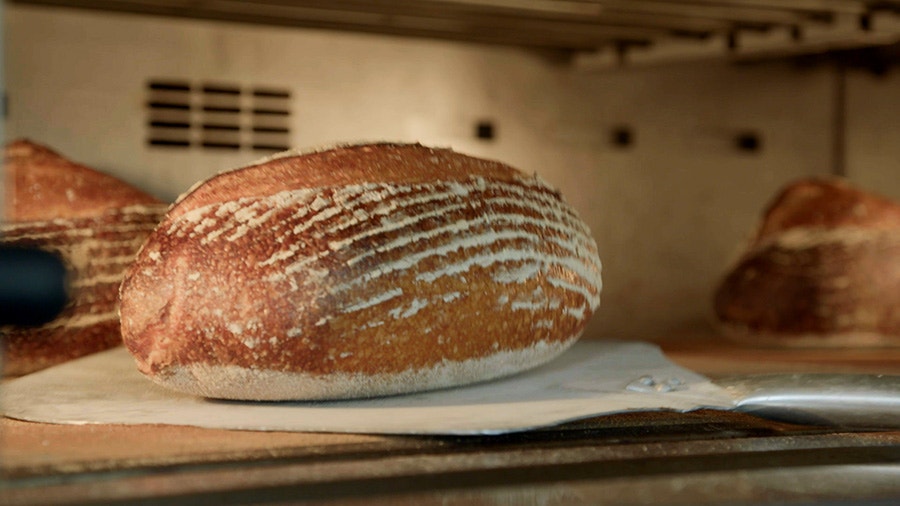Back
Sourdough Bread By Brasserie Bread

- Steps
- Ingredients
Ingredients
Sourdough Starter
1st Feed
2nd Feed
3rd Feed
Sourdough Bread
Select All
Steps
- Mix ingredients together in a bowl and cover with cling-film. Place in a warm draft-free area for 24 to 36 hours.
- After this time your starter should show faint signs of activity (such as aeration on the surface), taste sour, and be sharp in flavour. If this occurs your starter is ready for its first feed using a refreshment recipe.
1st Feed
- Add ingredients to your starter and stir well to combine. Leave covered in a bowl in a warm draft-free place for 8-12 hours.
- During this period, you must observe the starter during fermentation. You're looking for definite signs of activity to confirm the starter is alive. After 12 hours, your starter should be fermenting, with visual signs of bubbles rising to the surface.
2nd Feed
- Remove and discard 50% of the starter in preparation for its second feed.
- Add ingredients to your starter and stir well to combine. Leave covered in a bowl in a warm draft-free place for 4-6 hours.
3rd Feed
- Remove and discard 50% of the starter in preparation for its third feed.
- Add ingredients to your starter and stir well to combine. Let the starter develop in a covered bowl in a cool environment for 8-12 hours.
- By day three you should have the makings of the beginning of a healthy starter. For best results, the starter would require at least three further feeds. Remember to discard 50% if the starter with every feed.
Ready for baking
- In a new bowl place 190g of your starter and set the remaining aside.
- With the 190g starter, feed by doubling the recipe above and leave to develop for 8-12 hours. You can now use this starter to make your sourdough bread.
- With the starter you have set aside, continue the feeding process to ensure you have sufficient starter to split for the next day's sourdough.
Sourdough Bread
- Sift flour into a large mixing bowl and add the starter, water and malt. Work the dough by hand on a clean bench for 8-10 minutes. Add the salt and continue to work the dough for 5-7 minutes to further develop the gluten. Check the gluten window of the dough for gluten structure, continue working the dough if required.
- Rest in an oiled bowl, covered with cling wrap for 20 minutes at room temperature. Remove the dough from bowl and fold by bringing four opposite corners of the dough into the centre.
- Return to the bowl, cover with cling wrap and allow the dough to activate for 2 hours at room temperature. Pre-shape the dough and allow to rest for 20-30 minutes at room temperature.
- Finally shape the dough, place in a well-floured banneton, cover with a clean cloth and allow to prove overnight in the fridge (14-16 hours). Remove the dough from the fridge and allow to prove at room temperature until the dough reaches an internal temperature of approximately 16 degrees celcius.
- Gently empty the dough onto a semolina-dusted peel or baking sheet, dust the loaf with flour, slash and bake (preferably on a hot stone) in the oven at 210 degrees celcius for 40-45 minutes. Inject steam into the oven for approximately 5 seconds to develop the crust and assist in the initial rise of the bread. Remove from the oven and allow to cool.
























